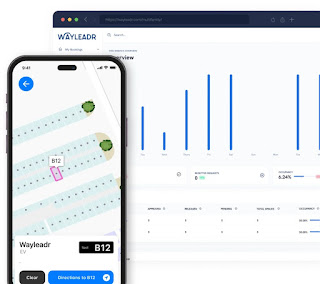EV Charging Station Management Software – Features and Use Cases
EV charging management software are created for businesses who want to bring efficiency in their operations. Regardless of whether you’re managing commercial, residential, or fleet charging, this blog analyzes the key features and the use cases of the software.
Features of EV Charging Management Software
EV charging station management software carries a varied suite of tools for deploying, overseeing, managing, monetizing, and optimizing electric vehicle charging stations. These software solutions boast a full range of feature sets, such as load-balancing capabilities, billing systems, and real-time analytics, among others. All the features collaborate to ensure efficient operation of the charging station and ease of accessibility. Being scalable it can meet growing demand.
Charge point operators work with back-office software to efficiently manage commercial EV charging stations. Generally referred to as O&M (Operations and Maintenance) software, it has adequate functionality to support maintenance. Typical features like real-time monitoring and remote troubleshooting give CPOs a facilitating environment to diagnose and resolve technical glitches without the need to visit the site.
With regards to the operations, full reporting and analytics offer insights into EV station performance, power supplied, and related metrics. By analyzing these reports, the users can make data-driven decisions, streamline asset handling and uphold transparency with stakeholders, like site owners and investors.
On the whole, this can be seen as the back-office software that helps the business run behind the scenes.
EV Charging Management Software Use Cases
EV fleet charging software - EV charging station management software has an array of powerful tools to coordinate, monitor, and optimize the charging of electric fleets. These are cost-effective platforms with features like real-time monitoring of charging sessions, proactive maintenance notifications to prevent downtime. Plus, comprehensive reporting to enable fleet performance optimization. Having in-built telematics systems ensures improved efficiency by synchronizing vehicle availability with charging schedules. Thus, lowers expenses and improves operational efficiency.
Due to massive energy use on site, commercial power demand fees can be a sizeable cost to deploying an EV fleet. The EV fleet charging software you select should help eliminate these costs by shaping the charging schedule of the assets on site.
EV Charging Station Management Software for Apartments – EV Charging management software is extensively used for managing EV infrastructure in apartment complexes. It allows a fair allocation of electricity costs among tenants by tracking individual usage. It means that each user pays specifically for their consumption. In collaboration, the access control features help property managers oversee who has permission to use the charging stations and at what times, ensuring fair access. These features raise tenant satisfaction by providing uninterrupted charging availability and creating a fair expense allocation framework.
For a multi-residential building, it will usually be required to oversubscribe the available infrastructure with the intention of deploying an adequate quantity of chargers. This oversubscription can be managed efficiently by a robust management software solution. Driver services software is an integral part of the system as properties aim to bill the residents for the energy dispensed directly.
The Nutshell
A good software should feature robust management tools and support for both property managers and drivers.
.png)
%20(1).jpg)
Comments
Post a Comment